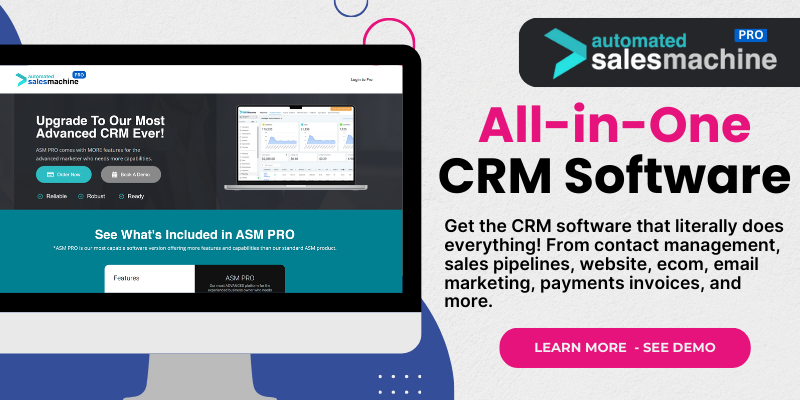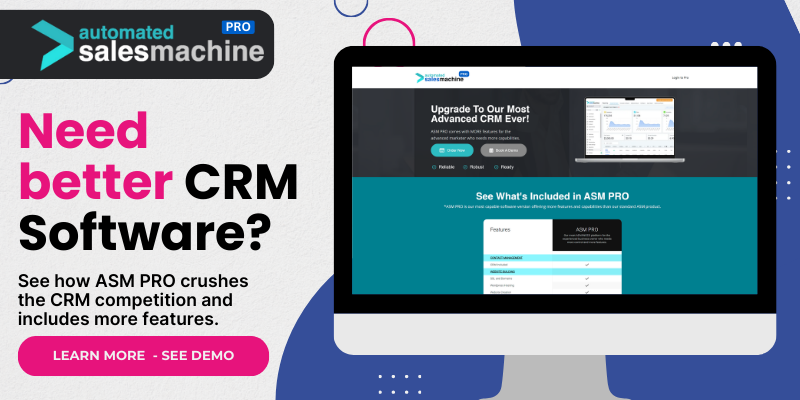1. Streamlining Communication Across Teams
Enhanced Collaboration Tools
One of the big wins I’ve experienced with Salesforce integration is how it streamlines communication. You see, in many companies, teams often work in silos, which can lead to misunderstandings and misalignments. With Salesforce, I’ve noticed that collaboration tools are right at your fingertips, making it easy to share updates and notes without jumping through hoops.
For instance, when project updates can be attached directly to customer records, everyone on the team knows where things stand. This reduces the back-and-forth emails and ensures everyone is on the same page, which is super crucial for productivity. Communication just flows more naturally.
Plus, using features like Chatter allows for real-time discussions. Having that immediate avenue for feedback means that small issues can be tackled before they snowball into big problems. In my experience, this has cut down bottlenecks and made the whole process feel much smoother.
Centralized Information Hub
Imagine all the customer information you need at your fingertips—sounds fantastic, right? With Salesforce, I’ve found that having a centralized database saves me time. Instead of digging through endless spreadsheets or disparate systems, everything I need is in one location. This unification cuts down on errors and promotes consistency in our messaging.
It’s also helpful for onboarding new team members. They can easily access all our historical conversations and data. When everyone can look at the same information, misunderstandings disappear, and I feel like I can focus more on growing relationships rather than worrying about details slipping through the cracks.
And let’s not forget about accessibility! Viewing customer profiles, sales data, and support tickets can happen from anywhere, whether I’m at my desk or out and about. This accessibility means I’m never out of the loop, no matter where I am.
Improved Decision Making
With all this communication flowing and data centralized, I have to spotlight how crucial it is for decision-making. Having insight into past interactions, preferences, and pain points helps me tailor my approach. Rather than making guesses, I can base my actions on solid data.
This becomes especially important during strategic planning sessions. When my team can access historical trends through Salesforce dashboards, we’re able to make more informed decisions. Instead of relying solely on instinct, we can analyze what’s working and what’s not.
That clarity transforms how we strategize. Knowing where customers are coming from and their past interactions allows us to refine our marketing. It empowers me to speak directly to customer needs, making our strategies much more effective.
2. Automating Everyday Tasks
Setting Up Workflows
Automating every day mundane tasks? Yes, please! One major benefit that I’ve reaped from using Salesforce is the ability to set up workflows. Tasks that once consumed precious hours, like sending follow-up emails or setting reminders, can now be automated.
These workflows reduce the chances of forgetting important tasks. For instance, if a client hasn’t responded in a while, Salesforce can automatically send follow-up reminders without me lifting a finger. I get to focus on more high-impact tasks instead of getting lost in the nitty-gritty.
This level of automation is a game-changer in ensuring nothing falls through the cracks. Plus, when all mundane tasks are managed efficiently, it gives me peace of mind, knowing that my processes are running like a well-oiled machine.
Customized Reporting
Another area where automation shines is in reporting. Instead of manually compiling data and creating reports, I can set Salesforce to do the heavy lifting for me. This means I get regular updates on sales performance, customer engagement, and overall business health without spending entire afternoons crunching numbers.
The beauty of automated reporting lies in its real-time capabilities. I can access dashboards that reflect the most current data without any extra work. This immediacy helps me react faster to changes in the market or customer behavior.
Not to mention, being able to easily share these reports with stakeholders keeps everyone informed and aligned. Everyone’s on the same page, and that opens the door for more strategic conversations rather than just data dumps.
Follow-Ups Made Easy
Let’s be real—following up with leads or clients can feel like a chore. Salesforce automation makes this process so much easier! It allows me to schedule follow-ups, set reminders, and even customize responses based on previous interactions.
I’ve implemented scenarios where Salesforce automatically triggers a thank-you email after a meeting, which saves me time and keeps my interactions professional and timely. These small touches contribute to a positive customer experience.
Having predictable follow-ups means that I can keep customers engaged without overwhelming myself. It also shows clients that I value their time and input, promoting a stronger relationship in return.
3. Enhancing Customer Experience
Understanding Customer Needs
Customer experience is everything, and with Salesforce, I’ve found that understanding customer needs is more accessible. All the interactions and preferences are logged, making it easy for me to review their journey with our brand.
This historical data gives me insight into how best to approach a client’s specific needs. Rather than offering generic solutions, I can tailor my messaging and offers. I swear it changes the dynamic completely!
Being able to personalize communication not only feels good for me but resonates with customers, too. They appreciate when I understand their unique situations and can respond accordingly.
Proactive Support
Another key aspect of customer experience that I’ve been impressed with is the proactive approach that Salesforce enables. By identifying potential pain points or follow-up needs, I can anticipate issues before they arise.
For instance, if a customer hasn’t interacted with our service in a while, I can send them a friendly nudge, reminding them of how we can add value to their operations. This proactive communication keeps clients engaged and demonstrates my commitment to their success.
By being ahead of the curve, I foster trust and loyalty, which is irreplaceable in building lasting client relationships.
Feedback Loops with Customers
Lastly, Salesforce allows me to set up seamless feedback loops. I can send out surveys or gather insights right after a customer interaction. This invaluable feedback helps me understand where we’re shining and areas in need of improvement.
Moreover, being able to act on feedback quickly shows clients that their opinions are valued. For example, I can address any concerns before they escalate. I’ve had many clients express appreciation for how fast we adapt based on their feedback!
Creating such loops fuels a cycle of improvement that enhances overall customer satisfaction. It’s about building a partnership where clients feel heard—what could be better than that?
4. Boosting Sales Efficiency
Data-Driven Insights
Sales folks, listen up! One of the best things about Salesforce is the data-driven insights it provides. Having access to analytics has been a game-changer for my sales strategies. It helped me dive into customer behaviors and preferences.
This insight allows me to tailor my approach in ways I never would have considered otherwise. For instance, understanding timing based on past purchase patterns helps me decide when to reach out.
The result? Higher conversion rates and, ultimately, better sales outcomes. It feels fantastic to make informed decisions based on actual data rather than relying on gut feelings alone!
Lead Scoring and Tracking
Another cool feature that boosts sales efficiency is lead scoring. Salesforce allows me to track leads based on various criteria, such as engagement levels and demographic information. This means I can focus on high-quality leads that are more likely to convert.
Less time chasing cold leads means more time nurturing the hottest prospects! By prioritizing effectively, I can allocate my resources where they matter most and improve my chances of closing deals.
This organized approach has made my sales workflow far more efficient. It’s liberating knowing I’m directing my energy towards the right people at the right moment.
Automated Follow-Up Solutions
And speaking of efficiency, automated follow-ups are a total lifesaver! I can configure Salesforce to send reminders to follow up with potential customers at optimal times, ensuring I never miss an opportunity. This automation allows me to maintain engagement without overwhelming my workload.
For example, if a client shows interest in a product, I can set a reminder to reach out exactly one week later. This keeps the conversation flowing effortlessly without me needing to manually track everything my leads do.
The consistency of follow-ups also highlights my dedication while enhancing my credibility. It demonstrates that I genuinely care about their needs beyond the sales pitch.
5. Comprehensive Reporting and Analytics
Visual Dashboards
Okay, let’s talk about reporting—the part that can make or break your workflow! One massive advantage I’ve found with Salesforce is the visual dashboards. Instead of sifting through pages of spreadsheets or text-based reports, I can glance at charts and graphs to instantly grasp performance metrics.
These visual tools make it way easier to communicate findings with my team. Everyone understands the trends and data without struggling through technical jargon. It’s all about transparency and insight!
In my experience, this accessibility has fostered a culture of data-informed decision-making. When my team can readily access and interpret these visuals, we can react quickly and strategically.
Customizable Reports
Not only is it great to have visuals, but the customization options for reports are fantastic. Salesforce lets me create tailored reports that focus on exactly what I’m interested in. For example, I can generate reports on specific campaigns or client segments, shedding light on what tactics are bringing in results.
Being able to analyze data in ways that matter most to me means I can pivot strategies as needed. If something isn’t working, I can spot it in real-time and make adjustments quickly rather than waiting for an end-of-month report.
This flexibility is vital in keeping me agile and responsive to changes, reflecting our commitment to constant improvement.
Trend Identification
Last but not least, the ability to identify trends is invaluable. By using historical data within Salesforce, I can see which products or services might be gaining traction over time. I love that it’s not just about the here and now; it’s about making predictions based on evidence!
This forward-thinking approach helps me strategize for future campaigns and align my efforts with customer interests. Knowing what’s gaining popularity allows me to allocate resources appropriately and design marketing initiatives that speak to emerging trends.
In conclusion, Salesforce can significantly enhance workflows by making communication smoother, automating tedious tasks, refining customer experience, boosting sales efficiency, and generating insightful reports. The transformation I’ve seen firsthand is nothing short of empowering!
FAQs
1. What are the primary benefits of integrating Salesforce CRM into my workflow?
The main benefits include streamlined communication across teams, automation of everyday tasks, enhanced customer experience, improved sales efficiency, and comprehensive reporting capabilities.
2. How does Salesforce improve communication within teams?
Salesforce provides tools like Chatter for real-time discussions, a centralized information hub to share updates, and access to historical data, fostering collaboration and reducing misunderstandings.
3. Can Salesforce really save time with automated tasks?
Absolutely! Automating tasks like follow-ups and workflow processes means you can focus on high-impact activities. It also helps ensure that nothing slips through the cracks.
4. How does using Salesforce enhance the customer experience?
Salesforce allows for personalized communication, proactive customer support, and efficient feedback loops, which together create a more engaging and valued experience for customers.
5. Is Salesforce suitable for all types of businesses?
Yes! Salesforce is versatile and can be customized to fit the needs of various businesses, whether you’re a small startup or a large enterprise.

